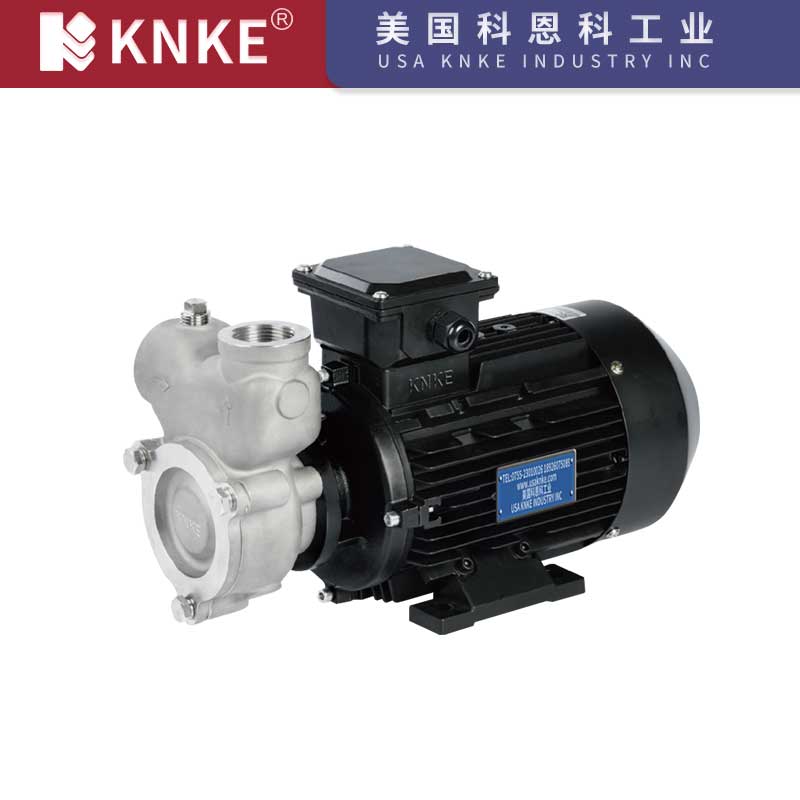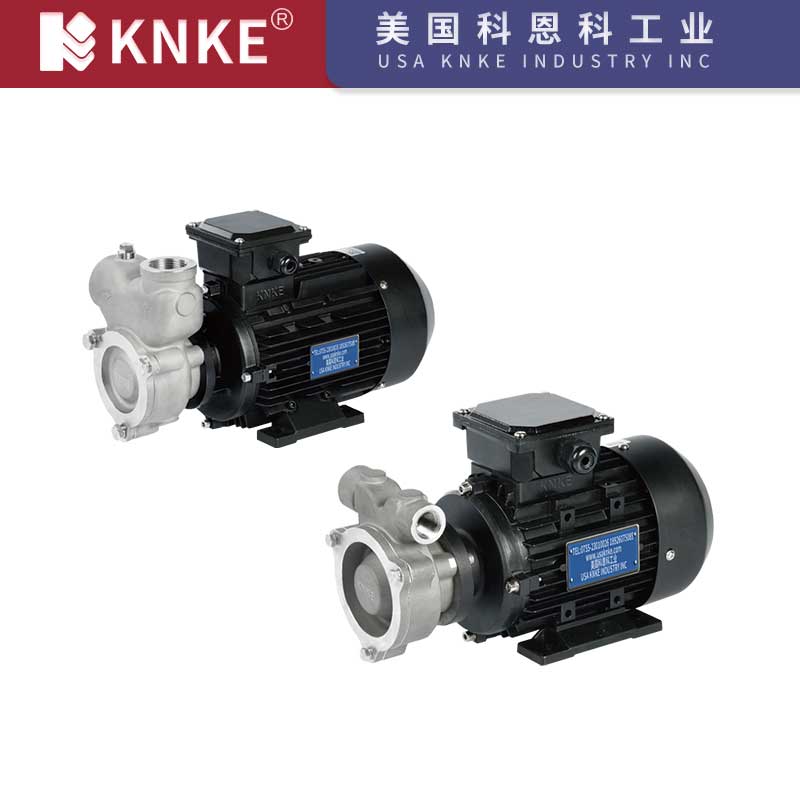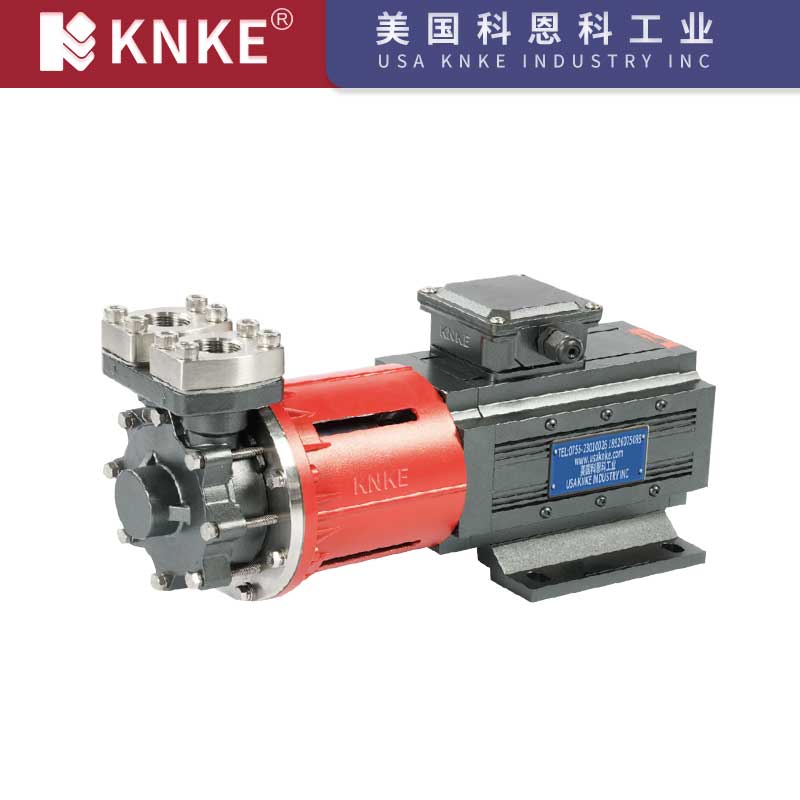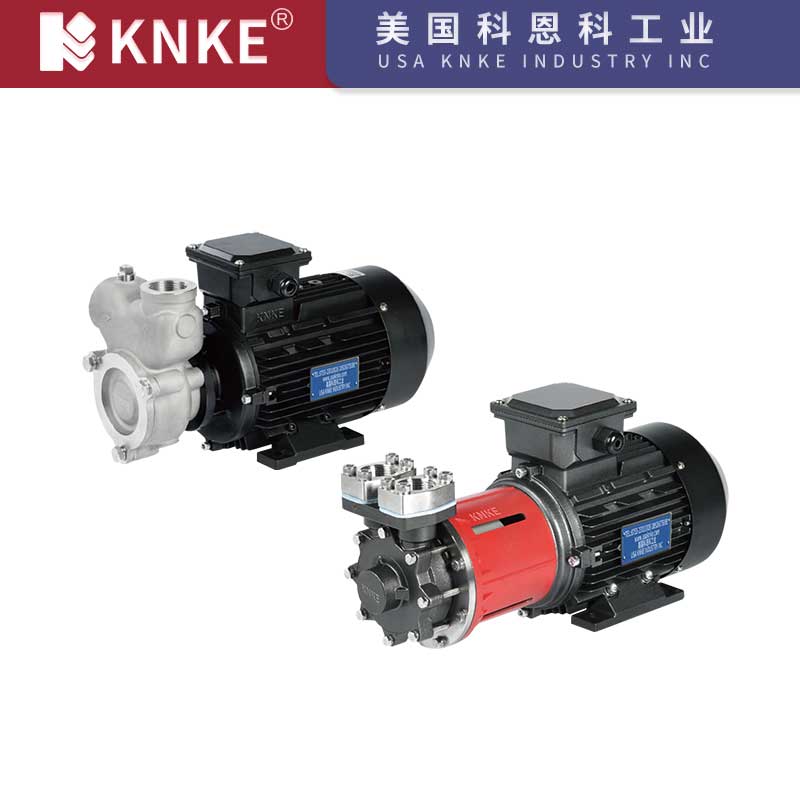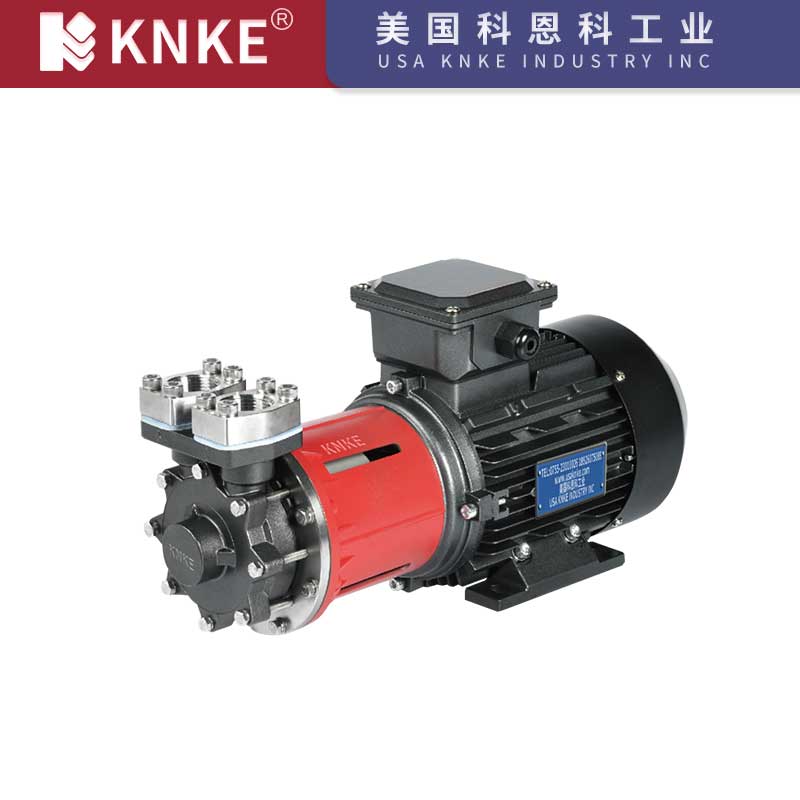Description
I. Product Overview of KNKE High Pressure Vortex Pump
The KNKE high pressure vortex pump is a single-stage cantilever vortex pump known for its simple structure, reliable safety, easy maintenance, compact size, and light weight. It is designed to handle clean water and liquids with similar physical and chemical properties, with a maximum working temperature of 60°C. Common applications include small boiler feedwater systems, and industries such as shipbuilding, textiles, chemicals, metallurgy, machinery manufacturing, pharmaceuticals, petroleum, electroplating, food processing, photography, research, and defense. The pump is ideal for transferring hazardous, volatile, and flammable liquids, including acids, alkalis, oils, rare or precious liquids, as well as for circulation water systems and filtration equipment.
II. Selection Parameters of KNKE High Pressure Vortex Pump
| Parameter | Specification |
| Nominal Diameter | 25-300 mm |
| Flow Rate | 0.36-60 m³/h |
| Head Range | 10-132 m |
| Suction Head | 7 m |
| Power Range | 0.75-13 kW |
| Speed Range | 2900 rpm |
| Explosion-Proof Mark | ExdeIIBT4 DIP21 TA T6 |
| Protection Level | IP54/IP65 |
| Rated Voltage | 220V, 380V, 660V, 1140V |
| Temperature Range | -20°C to 120°C |
| Working Pressure | ≤1.6 MPa |
| Pump Body Material | Cast Iron, WCB, 304, 316, 316L |
III. Operating Principle of KNKE High Pressure Vortex Pump
The KNKE high pressure vortex pump features a simple yet effective design with an impeller, pump casing, and shaft seal. During operation, the liquid enters radially into the pump and fills the annular flow path. The rotating impeller transfers energy to the liquid, increasing its pressure. The pressurized liquid is then discharged radially through the outlet pipe.
A baffle between the suction and discharge pipes prevents backflow, ensuring that the high pressure zone does not return to the low-pressure area. The liquid is energized through two circulations: one caused by centrifugal forces, and another due to pressure differences on the impeller’s front and rear surfaces. These circulations work together to boost the liquid’s energy as it passes through the impeller multiple times.
This mechanism enables the vortex pump to achieve high heads, making it ideal for a variety of industrial applications.
IV. Applications of KNKE High Pressure Vortex Pump
When the flow rate is low, the fluid velocity inside the pump is also low, allowing the liquid to remain inside the pump longer and pass through the impeller multiple times, generating higher head. Conversely, as the flow rate increases, the head decreases.
The vortex pump is ideal for low-flow, high-head applications. Under the same impeller diameter and speed, the single-stage head can reach up to 250 meters, which is 2 to 4 times higher than centrifugal pumps.
V. Key Features of KNKE High Pressure Vortex Pump
- Low Flow, High Head: Capable of achieving high heads, even at low flow rates.
- Compact and Efficient: Simple structure, lightweight, and capable of self-priming or self-priming with auxiliary devices.
- Versatile Use: Ideal for transferring small volumes of corrosive, volatile, and flammable liquids.
- Reliable Operation: Suitable for use in industrial processes requiring high pressure, low-flow conditions.
- Durable: Constructed with high-quality materials for long-lasting performance in demanding environments.
VI. Starting, Stopping, and Operating the KNKE High Pressure Vortex Pump
Starting and Stopping
- Check the Bearing: Before starting, check the bearing for proper lubrication. If the pump has been idle for a long time, inspect the bearings and reapply grease if necessary.
- Check the Motor: Ensure the motor is in good condition, with insulation resistance of at least 5MΩ. If the motor is damp, run it for a while to dry out.
- Start the Motor: Perform a dry run by briefly engaging the motor to check its rotation direction.
- Open the Suction Valve: Slowly open the suction valve to fill the pump casing with liquid.
- Adjust the Discharge Valve: Once the pump is running, adjust the discharge valve to achieve the required pressure.
- Stop the Pump: To stop the pump, first close the discharge valve, then stop the motor.
Operating
- Monitor Pump Performance: During operation, monitor the motor and bearing temperature. If overheating occurs, check for blockages or misalignment.
- Troubleshoot Issues: If any issues arise, stop the pump immediately and investigate.
VII. Common Failures and Troubleshooting for KNKE High Pressure Vortex Pump
| Issue | Cause | Solution |
| Insufficient Flow | 1. Blocked pipeline | 1. Clear the pipeline |
| 2. Excessive gap between impeller and casing | 2. Reduce gap to design specifications | |
| Low Head | 1. Worn impeller | 1. Replace the impeller |
| Leakage | Mechanical seal wear | Replace the mechanical seal |
| Motor Overheating | 1. Unbalanced power supply | 1. Balance the power supply |
| 2. Excessive pump head | 2. Adjust the discharge valve to correct levels |

